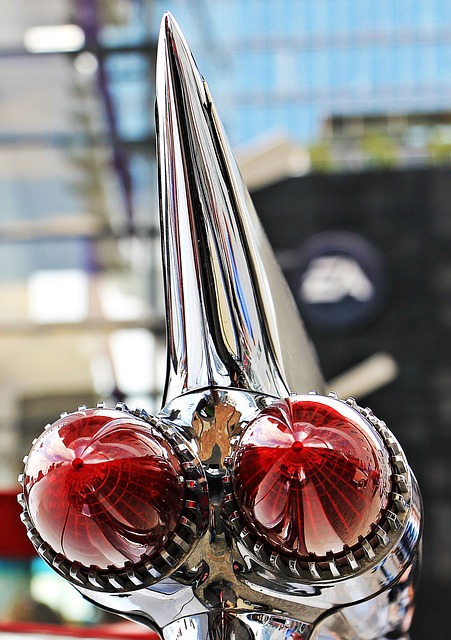Looking to register your car in California? This guide will walk you through the process step-by-step. First, understand the state’s car registration requirements, which include providing proof of insurance and paying fees. Next, gather necessary documents for VIN (Vehicle Identification Number) verification, a crucial part of the registration process. After ensuring your vehicle’s details are accurate, select a California DMV location to complete the registration and officially hit the road.
- Understand California Car Registration Requirements
- Gather Necessary Documents for VIN Verification
- Perform Vehicle Identification Number (VIN) Check
- Select a California Department of Motor Vehicles (DMV) Location
- Complete Car Registration Process and Pay Fees
Understand California Car Registration Requirements

Before registering your car in California, it’s crucial to understand the state’s specific requirements for vehicle registration. One key aspect is ensuring the Vehicle Identification Number (VIN) is verified accurately. The VIN is a unique code that identifies your car and plays a vital role in the registration process. In California, this verification typically involves a comprehensive inspection of the vehicle to confirm its identity and condition.
A mobile VIN verification or vin inspection service can be particularly useful for convenience. These services offer on-site assessments, allowing you to have your car’s VIN checked while you wait. This is especially beneficial if you’ve recently purchased a used vehicle, as it ensures the accuracy of the information before finalizing the registration. By adhering to these requirements and utilizing available resources like mobile vin inspection, you can smoothly navigate the process of registering your vehicle in California.
Gather Necessary Documents for VIN Verification

To register your car in California, you’ll need to undergo a Vehicle Identification Number (VIN) verification process. This involves ensuring that all details associated with your vehicle match the information on record. Before heading to the DMV, gather essential documents for this critical step. Obtain your vehicle’s VIN from its registration or title document; it’s a unique 17-character code that identifies your car.
Additionally, collect proof of insurance, your driver’s license, and the title (if applicable) for the vehicle. For convenience, consider using a mobile vin inspection service to have your vehicle verified remotely. These services offer accurate VIN inspections by professionals who can guide you through the registration process, ensuring a smooth transition.
Perform Vehicle Identification Number (VIN) Check

Before you register your car in California, it’s crucial to perform a Vehicle Identification Number (VIN) check. This process involves verifying the VIN of your vehicle to ensure its authenticity and history. A mobile VIN inspection or mobile VIN verification service can make this step convenient by allowing you to complete the check at your location. These services use specialized tools to cross-reference your VIN with national databases, providing detailed information about the vehicle’s past, including ownership records, accident reports, and outstanding liens.
A valid and accurate VIN is essential for successful car registration in California. By utilizing a mobile VIN verifier, you can ensure that your vehicle has not been reported stolen, has no outstanding issues, and meets all safety standards. This step saves time and effort, streamlining the registration process and preventing potential delays or complications.
Select a California Department of Motor Vehicles (DMV) Location

When registering your car in California, choosing the right DMV location is a crucial first step. You can select from various California Department of Motor Vehicles (DMV) branches across the state. It’s advisable to pick a location that offers convenient hours and services tailored to your needs. Many DMVs now provide mobile vin verification services, allowing you to conduct an essential part of the registration process—checking the vehicle identification number (VIN)—from the comfort of your home or even while on the go with a mobile vin verifier.
This convenience is particularly beneficial for busy individuals who may not have time to visit a traditional DMV branch. Alternatively, if you prefer in-person service, ensure the location you choose offers all the required registration services without complicating matters with unnecessary procedures.
Complete Car Registration Process and Pay Fees

To complete the car registration process in California, you’ll need to undergo a series of steps that include verifying your vehicle’s identity through its unique VIN (Vehicle Identification Number). Start by visiting the official California Department of Motor Vehicles (DMV) website to access their online services. Here, you can initiate the registration process and calculate the required fees. These fees vary based on your vehicle type and age, so ensure you have the necessary funds ready.
After gathering all the required documents, including proof of insurance and identification, schedule a time for your car’s inspection. You can opt for a mobile VIN inspection or visit a local DMV office to get this done. The inspection ensures that your vehicle meets safety standards. Once approved, you can proceed with payment, which can be made online or at a DMV field office. After settling the fees, submit your documents, and receive your registration certificate, which officially registers your car in California.
Registering a car in California involves understanding specific requirements, gathering essential documents for VIN verification, and completing a straightforward process at your local DMV. By ensuring accurate information and satisfying all necessary checks, including the crucial VIN verification, you can efficiently navigate the car registration process in the Golden State.
